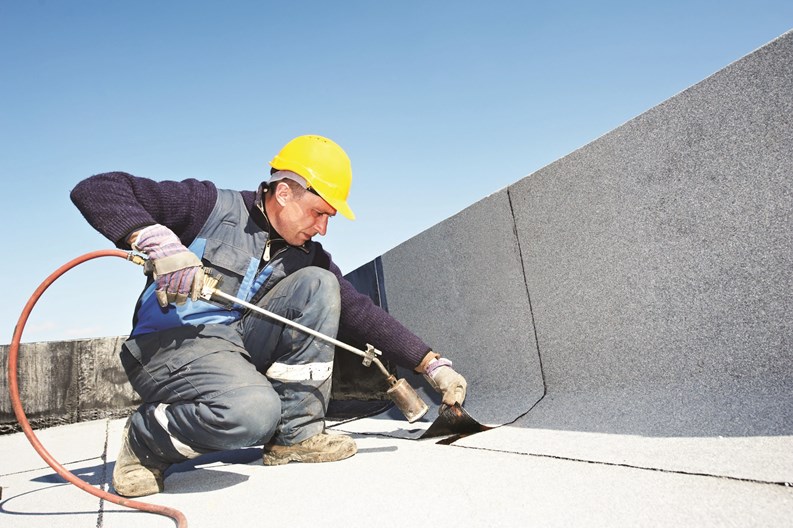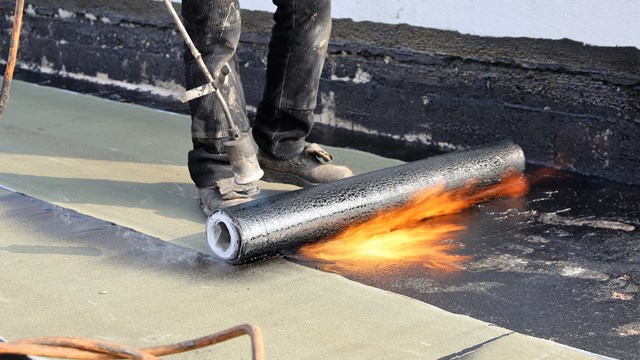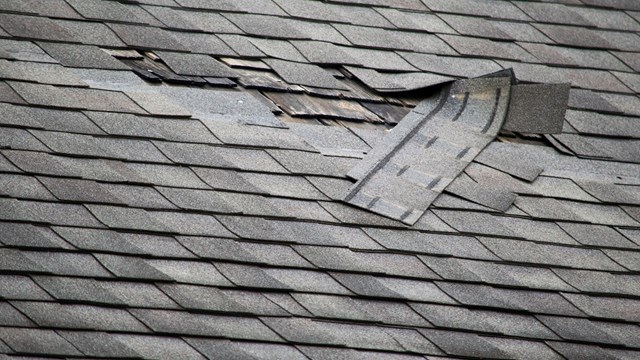A residential property could have triple-reinforced titanium steel walls and it still wouldn’t be worth a darn without a sturdy roof. It’s through the latter that many problematic elements can enter a building, from wind to rain to ice to debris. And because of that, the roof must be adequately fortified and properly maintained, lest the integrity of the building – along with resident safety and property value – suffer.
Basics for Beginners
A novice with no roof-working experience nor time spent as a roof owner may justifiably know not where to begin in regard to taking care of one. Fortunately, there are myriad experts – from property managers to A/E/C professionals to trades persons who solely work on roofs – who can set them on the right path.
“A roof should be inspected every few years,” says Frank Sausa, Vice President of Altura Construction Company Inc., in Garfield. “If a leak gets severe enough, a homeowner’s ceiling can literally collapse. The most common cause of leaks that we see is when the rubber boot around plumbing vents deteriorates. Additionally, we often conduct repairs around chimneys, skylights and valleys, utilizing shingles, GAF, leak barrier ice and water shield, synthetic paper, step flashing, counter flashing, and, most importantly, kick-out flashings.”
Between formal inspections by a roofing professional, associations should be doing routine maintenance on their own. “Inspection of roofs should be part of the basic building maintenance and reviewed at a minimum of a few times per month, especially during and after heavy rains or snow,” says Dennis P. DePaola, Executive Vice President of Orsid Realty Corp., in New York City. “Not only should the roofing surface, pitch pockets and flashings be checked, but the floor below should be looked at as well in order to catch even the smallest amount of water infiltration as early as possible, before any major damage occurs.”
Of course, roofs are not ‘one size fits all,’ and there are variables that pertain to maintenance scheduling. “The age of the roof totally depends on the materials used,” notes Cindy Petrenko, Owner of Complete Property Management Services LLC, in Vernon. “Roofing shingles have different warranties ranging from 10 to 30 years. There are other products, such as clay, which is mainly used out west, or slate, which was more popular years ago, that can still be utilized. Then there are ‘flat’ roofs, with materials of torched rubber. And the pre-installation preparation, as well as the installation itself, have a big impact on the roof.”
And Thomas Chilenski, President of Cedarcrest Property Management in Fairfield, actually suggests that an association have its roof(s) inspected by a trusted roofing contractor every year. “Ideally by someone with whom you’ve worked for years and has proven themselves to be forthcoming,” he adds. “They must have the ability to document everything, take pictures, and make repairs quickly while on the roof. Alternatively, you may use an engineering firm, but that is not as cost-effective.”
In areas where the temperatures in a given year can reach sweltering highs and frigid lows, roofs can wear much faster than in more moderate regions. To be proactive, an association should perform a visual inspection of its roof on an annual basis, suggests Tim Arel, Owner and Principal of North Point Management, which has offices in both Massachusetts and New Hampshire. “This inspection should look for missing or damaged shingles, as well as wear and warping. That will allow an association to perform the small and relatively easy repairs before they develop into serious issues that result in the need for full roof replacement, or damage to the buildings. Proactive annual inspections work to extend the life span of the roof, but they also provide information needed to plan for a roof’s eventual replacement. And they can initially be performed by qualified members of the management team, or by association volunteers. The key is to have individuals who know what they’re looking for perform these inspections. Then, when issues are identified, management and the board should contact a qualified roofing contractor to perform the needed repairs, or to provide a professional assessment with recommendations.”
Damage Done
Certain roof-based dilemmas are more common than others, so it pays for a board or management to be aware of the likely suspects.
“We’ve taken over buildings from other firms wherein we have found severe structural steel damage due to neglect, and the failure to stop water infiltration for prolonged periods of time,” notes DePaola. “In such instances, we’ve had to install shoring within apartments to offset the load from the damaged steel. This may require a relocation of the residents, depending on the severity of the situation.
“We’ve also been successful in spotting smaller repairs of roofing systems that are still under warranty, at little-to-no expense to the building owner,” he continues. “By regularly checking for these smaller repairs and addressing them in a timely manner, owners can greatly extend the useful life of the roofing system, sometimes well beyond their 20-/25-year warranty.”
Chilenski offers up a checklist of common problems for which an association should look out: “we’ll find rotted underlayment, improper ventilation, improper materials or construction practices utilized... all of these decrease the life expectancy of a roof. A visual inspection can turn up evidence of potential issues. You can look for spots or staining, or clogged gutters. And you can check the landscaping below the roof area for evidence of anything amiss. This can help mitigate damage or problems from escalating, as you can correct an issue before the roof or its materials decay past the point of salvation.”
And, as one may intuit, ice is a major enemy in regions with particularly cold winters. “The removal of ice dams has been a significant contributor to roof damage over the past several years,” says Arel. “When faced with an emergency situation caused by interior water intrusion for ice dams, some vendors believe that the solution lies in removing the ice via the use of hammers and pickaxes. While this may temporarily alleviate the problem, the net result is significant damage to shingles and roofs. This makes for a great example as to how proper planning and hiring vendors with the correct equipment will benefit an association in the long-term.”
Balance in Budget
The more on top of roof-related affairs an association is, the less likely it is that it will have to spend exorbitant amounts of money to fix a disaster. With that said, unpredictable calamity, however, can happen, and an association is best served tucking away some extra funds in the event of a rainy day.
“Every association should have both short- and long-term capital plans for the essential building components,” says DePaola. “We know that roofing systems have a useful life between 10 and 30 years, depending on the system and the warranties received. Therefore, the association should be funding or implementing a plan to fund – via either borrowing or assessment – for the roof replacement during the entire life cycle of the capital component. The most costly roofing projects to which we’ve been privy are those that have not been planned for and those that have been deferred for too long.”
Routine maintenance and minor repairs – regular gutter cleaning, for example – and staying regular with inspections can greatly contribute to extended roof life, urges Chilenski. “Properly funded reserves and utilizing properly updated engineering reserve studies is the best way to ensure that you are ready for a roof project when the time comes,” he says. “We have been involved with roofing projects which exceeded $1.5 million. The initial estimates were lower at around $1 million, but so much hidden damage was uncovered once contractors started removing the old material that additional material and repairs increased the cost by 50 percent.”
“The correct and exact way to budget for a roof is to do so from the inception of the community association,” recommends Petrenko. “Start funding the reserves from the beginning, and don’t stop. This will pay off when that capital improvement project hits, whatever it is, roof included. And if your association has not already started saving, it’s never too late to start. Otherwise, in event of an emergency, the members of the community will have to be specially assessed to raise the necessary funds.”
Mike Odenthal is a staff writer at The New Jersey Cooperator.







Leave a Comment